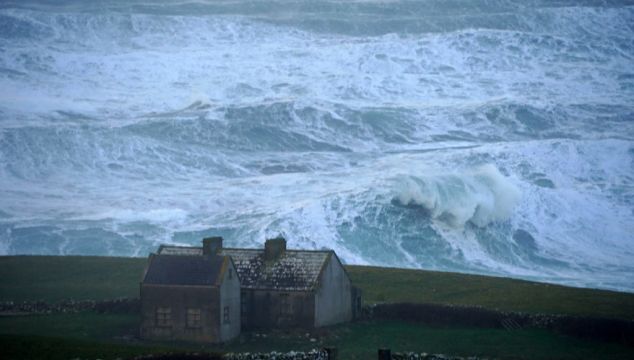Advice given to forecasters in Met Éireann said Ireland needed to prepare itself for much heavier rainfall, storm surges and coastal flooding, as well as the growing “likelihood of extreme weather events”.
The climate guidance was sent to meteorologists in June amidst a summer of freak weather events globally, including record-breaking temperatures, catastrophic flooding, and out-of-control forest fires.
The Met Éireann guidance said it was “beyond doubt” that human influence has warmed the atmosphere, ocean, and land, and that temperatures here were up by approximately 1 degree since 1900.
It said this made extreme weather events more likely but that it was difficult to say how this would impact the frequency and intensity of storms in Ireland with further research needed.
The advisory said our climate had become significantly wetter with annual rainfall in the 1991 to 2020 period 7 per cent higher than what was experienced between 1961 and 1990.
The document explained: “Irish rainfall patterns are expected to change, with an increase in both dry periods and heavy rainfall events.”
It added there is “high confidence” that we could expect maximum rainfall rates to increase as the warmer atmosphere would carry more moisture.
The guidance added that a warmer atmosphere could be expected to carry 7 per cent more moisture for every degree of warming, with heavy rainfall events inevitably increasing in intensity.
“Global sea level continues to rise. As a result, storm surge and coastal flooding risk around Irish coasts is expected to increase,” it said.
'Human-casued climate change'
On the heatwaves that have hit many different areas, the advisory said these were becoming more frequent and more intense, driven mainly by “human-caused climate change”.
It said some of the most extreme heat events seen in recent years would have been very unlikely in the absence of human influence, including the so-called “heat dome” that developed in the Pacific Northwest during 2021.
The guidance said with changing rainfall patterns in Ireland, there would likely be an increase in both extended dry periods and heavy rainfall events.
“More severe agricultural and ecological droughts are projected under climate change; the more the planet warms, the more severe and widespread the drought impacts will be,” it warned.
On Irish Sea surface temperature (SST), it said changes there had been more unpredictable, with periods of warming and cooling, but added marine buoy observation appeared to show climbing rates again.
“Irish SSTs are currently well above average and North Atlantic SSTs are currently at record highs for this time of year, June 2023. NOAA [the National Oceanic and Atmospheric Administration] has declared an area of the Atlantic off the west coast of Ireland as a Marine Heatwave Watch area,” the guidance said.
The advisory said global sea levels had increased by approximately 0.2 metres over the past 118 years, adding the pace of this was “accelerating”.
It said in Ireland's mean sea levels were broadly in line with global trends but that worryingly, higher rates had recently been observed in both Cork and Dublin.
The document said it was “unclear why” this was so, adding it is “currently under investigation”.
The advisory said “key messages” based off recent data should be that 2022 was the warmest on record in Ireland and was the 12th consecutive year with above normal temperatures.
The all-time highest maximum temperatures for July and August had both been broken at the Phoenix Park at 33 degrees, and in Oak Park, Carlow at 31.7 degrees.
“Ten synoptic stations reported their highest daily maximum temperature, for any month, on record. Eleven synoptic stations broke their August maximum temperature record, with heatwaves reported at seven stations,” it noted.
Asked about the records, Met Éireann said it did not plan to issue a statement on the advisory at this time.







